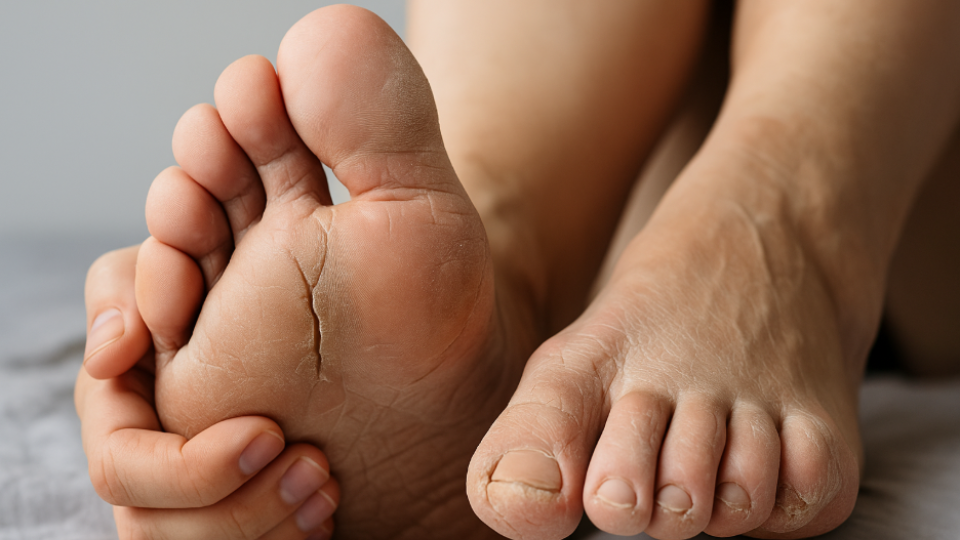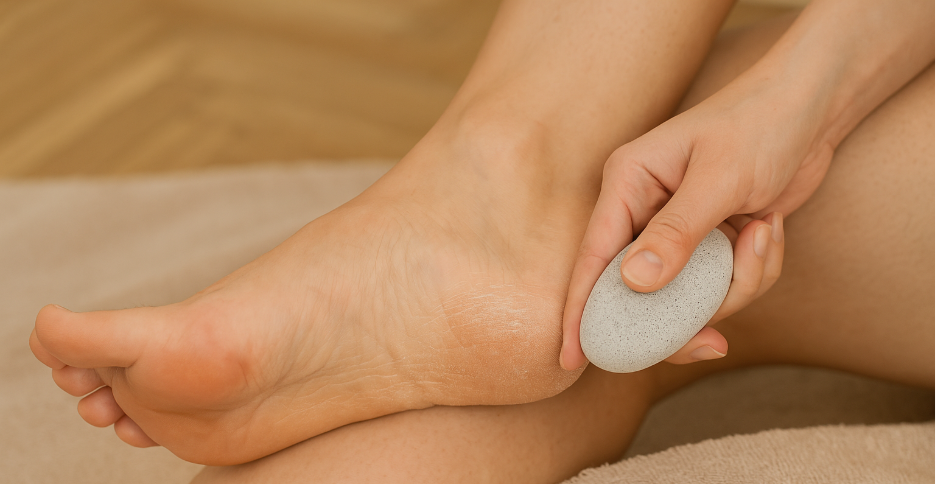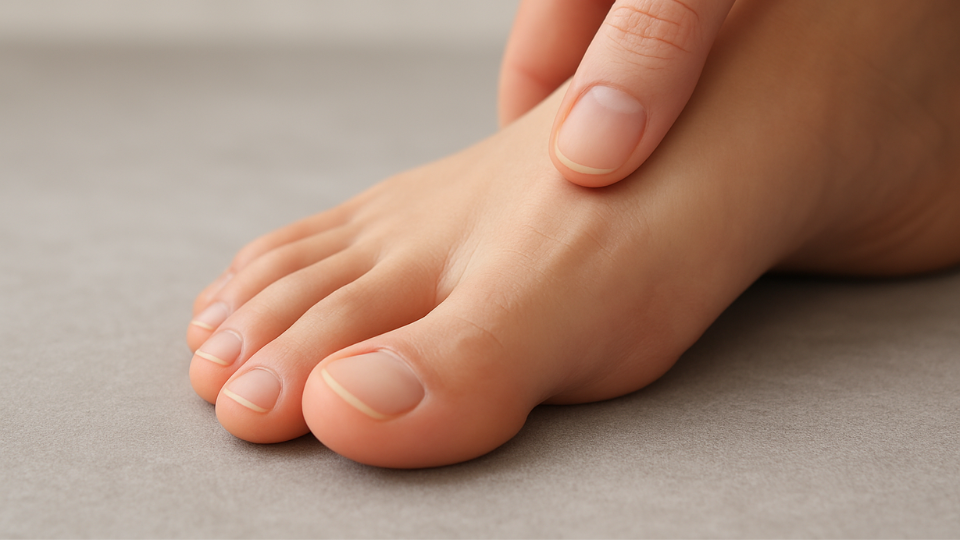
Cracked skin on your feet isn’t just a cosmetic issue, it can be painful, uncomfortable, and even lead to infection if left untreated. If you’ve noticed painful cracks on the bottom of your feet or a cracked area on the ball of your foot, understanding the root causes is the first step toward relief and prevention.
Common Foot Crack Causes
The skin on your heels and the ball of your foot endures constant pressure, friction, and exposure to dry air. Over time, these factors can weaken the skin’s natural barrier, causing it to thicken, dry out, and eventually split. Some of the most frequent foot crack causes include:
- Dry skin (xerosis): Low humidity, hot showers, and lack of moisturizing can strip your feet of natural oils.
- Calluses: Thickened skin develops as protection from friction, but over time, these areas can harden and start cracking calluses on feet. If you often develop calluses or dry, thickened skin near your toes, you may also want to read our related article on Big Toe Callus: Causes, Treatment, and When to See a Podiatrist.
- Prolonged standing or walking barefoot: Pressure on dry or callused areas causes the skin to split under weight-bearing.
- Improper footwear: Open-back shoes or sandals allow fat pads on the heel to expand outward, deepening cracks.
- Medical conditions: Diabetes, eczema, psoriasis, hypothyroidism, and obesity can contribute to cracked skin on bottom of feet by affecting circulation, moisture balance, or nerve sensitivity.
Why the Ball of Your Foot May Crack
While heel cracks are more common, many people experience a cracked ball of the foot due to repetitive stress and pressure on the forefoot. Tight shoes, high-impact exercise, or walking barefoot on hard surfaces can worsen friction.
The skin here is naturally thicker, but when it loses elasticity or moisture, deep fissures can appear, sometimes painful enough to make each step uncomfortable.
When Cracked Skin Becomes Painful
Mild dryness can often be managed at home, but painful cracks may indicate deeper fissures that expose sensitive tissues underneath. Once cracks open the skin barrier, bacteria or fungi can enter, increasing the risk of infection.
You should see a podiatrist if you notice:
- Redness, swelling, or bleeding.
- Cracks that don’t heal with moisturizers.
- Pain when walking or standing.
- Signs of infection (warmth, pus, or drainage).
- Cracks associated with diabetic neuropathy or circulation issues.
A foot specialist can safely debride thick calluses, treat underlying fungal infections, and recommend custom orthotics to relieve pressure on problem areas.

Preventing Cracked Skin on your Feet
If you’ve been thinking, “my feet are cracking, what should I do?” there are safe and effective ways to restore smoothness and comfort:
Soak and Exfoliate
- Use warm (not hot) water with mild soap or Epsom salts for 10–15 minutes.
- Gently remove dead skin with a pumice stone or foot file. Avoid over-scrubbing, which can worsen cracks.
Moisturize Daily
- Apply a thick, fragrance-free cream or ointment containing urea, salicylic acid, or lactic acid.
- Seal moisture by wearing cotton socks overnight after applying cream.
Protect and Cushion
- Use heel balms or silicone pads to reduce friction and support healing.
- Avoid walking barefoot, especially on tile or concrete floors.
Choose Proper Footwear
- Wear shoes that support your arches and cushion pressure points.
- Replace worn-out insoles regularly to prevent uneven weight distribution.
To learn more about choosing footwear that protects your feet, read our guide on Best Shoes for Foot Pain: How to Choose the Right Footwear for Comfort and Support.
Stay Hydrated and Maintain Foot Hygiene
- Keep your feet clean and dry, especially between the toes.
- Drink enough water to maintain skin elasticity.
When Professional Treatment Is Needed
For stubborn or severe cracking calluses on feet, a podiatrist can provide advanced care such as:
- Medical debridement: Removing thickened or dead skin safely to promote healing.
- Prescription creams: Stronger emollients or keratolytic agents to repair deeper fissures.
- Custom orthotics: Devices designed to redistribute pressure and reduce recurring cracks. To learn how proper support can protect your feet and improve comfort, explore our guide on Custom Orthotics vs. Over-the-Counter Insoles: Which Is Right for You?.
- Infection management: If cracks become infected, early treatment helps prevent complications, especially in diabetic patients.
- Schedule regular podiatry visits, especially if you have diabetes or chronic dry skin.
Professional care ensures that cracks are treated at the source, not just the surface, reducing the risk of future pain and infection.
Healthy Feet Start with Proper Care
Cracked skin may seem minor at first, but it’s your body’s way of signaling that your feet need attention. With daily care and the right footwear, most people can heal cracks naturally and prevent them from returning.
If you’re struggling with painful cracks on the bottom of your feet, chronic cracking calluses, or a cracked ball of the foot that won’t heal, professional treatment can help restore your comfort and mobility. Book an appointment today and take the first step toward smoother, pain-free feet.
Read Our Latest Blog

Stress Fracture in the Foot: Symptoms, Swelling, and When You Can (or Can’t) Walk
Learn the symptoms, swelling signs, and walking guidelines for stress fractures in the foot. Protect your recovery with expert podiatric care at FAS The Woodlands.



